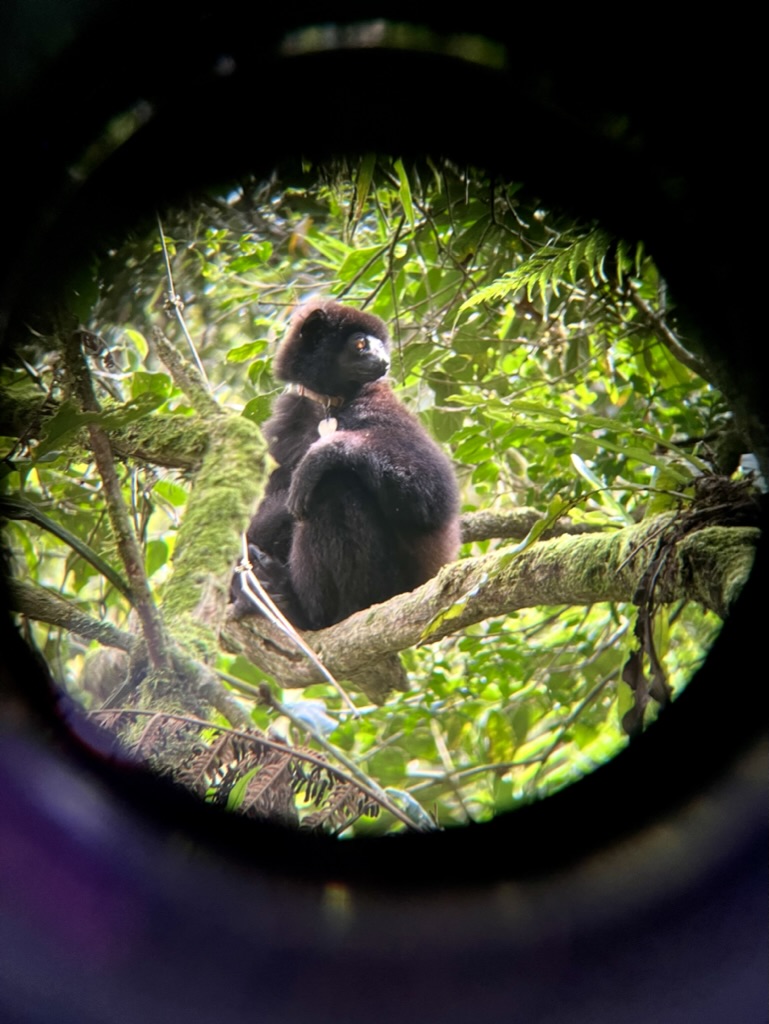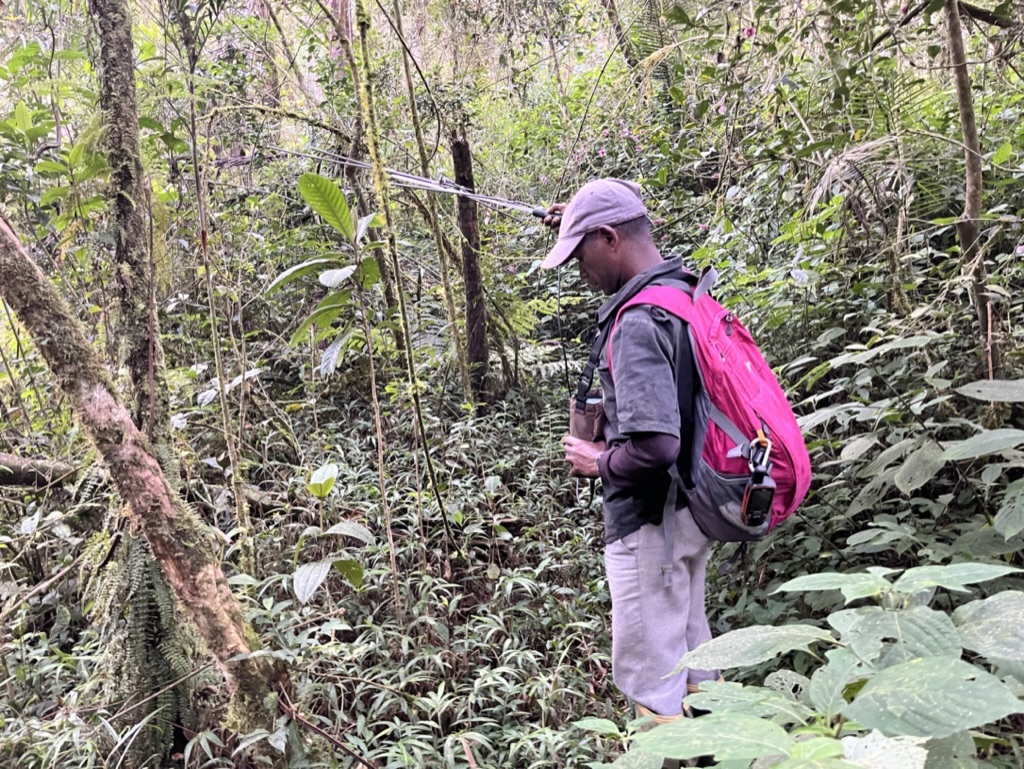Exploring the Connection Between Mistletoe, Lemurs, and the Forest Community
Primary Investigator: Julieanne Montaquila
 I am a PhD student in Dr. Amy Dunham’s lab at Rice University in Houston, Texas. I
am interested in the community ecology of forests such as the rainforest of Ranomafana
National Park. My research questions include themes of direct and indirect interactions
between different species and the effect these interactions have on the forest community
and ecosystem functioning. As part of my doctoral research, I am focusing on the role
of parasitic mistletoes that grow on trees in RNP and are an important food source
for many species of lemurs, which in turn drive seed dispersal, pollination, and other
vital ecological processes that help promote diversity and regeneration of the forest.
I am a PhD student in Dr. Amy Dunham’s lab at Rice University in Houston, Texas. I
am interested in the community ecology of forests such as the rainforest of Ranomafana
National Park. My research questions include themes of direct and indirect interactions
between different species and the effect these interactions have on the forest community
and ecosystem functioning. As part of my doctoral research, I am focusing on the role
of parasitic mistletoes that grow on trees in RNP and are an important food source
for many species of lemurs, which in turn drive seed dispersal, pollination, and other
vital ecological processes that help promote diversity and regeneration of the forest.
Mistletoes are a group of plants that germinate on a tree branch, where they grow
a
specialized root that connects directly to the host tree’s vascular system. The mistletoe
depends upon its host for water and minerals. While these plants often resemble inconspicuous
shrubs sitting in a tree, they are actually quite common in RNP, belonging to the
Bakerella genus, which is endemic to Madagascar and the surrounding islands. Lemurs eat the
fruit and flowers of mistletoe, which are a stable resource due to dependable resources
from the host tree. As an important food source, I hypothesize that Bakerella influences
the activities of lemurs, their impact on different tree species, and their overall
role in the ecosystem.
 From May to July of 2023, I studied mistletoe and the feeding activities of RNP’s
largest lemur species, the Milne-Edward’s sifaka (Propithecus edwardsi). Unlike other lemurs in the forest, P. edwardsi predates upon seeds, crushing them and killing them, rather than dispersing seeds
to other parts of the forest. While fruit and seeds are preferred by P. edwardsi, the dry season in Ranomafana is characterized by low fruit availability. To supplement
their diets, P. edwardsi eats a large amount of leaves at this time. Previous studies have shown that of all
of the many leaves available in the forest, these sifaka spend a large amount of their
time feeding upon Bakerella leaves. With a preference for fruit, and secondarily for the leaves of mistletoe,
I hypothesize that P. edwardsi will spend the most time feeding at trees with both fruit and parasitic mistletoe.
This may result in a trade-off for the host tree: while the sifaka kill a proportion
of their seeds, they also may graze down mistletoe on the tree, which as parasites
negatively affect the host tree. Alternatively, trees that have fruit during the dry
season may only experience frugivory by P. edwardsi, with any mistletoe parasites ignored in favor of the more nutrient-dense fruits
and seeds. While it is too early in my research to make any conclusions, my fieldwork
was fascinating and will hopefully overturn new and interesting information about
how complex multi-species interactions create the forest community as we know it.
From May to July of 2023, I studied mistletoe and the feeding activities of RNP’s
largest lemur species, the Milne-Edward’s sifaka (Propithecus edwardsi). Unlike other lemurs in the forest, P. edwardsi predates upon seeds, crushing them and killing them, rather than dispersing seeds
to other parts of the forest. While fruit and seeds are preferred by P. edwardsi, the dry season in Ranomafana is characterized by low fruit availability. To supplement
their diets, P. edwardsi eats a large amount of leaves at this time. Previous studies have shown that of all
of the many leaves available in the forest, these sifaka spend a large amount of their
time feeding upon Bakerella leaves. With a preference for fruit, and secondarily for the leaves of mistletoe,
I hypothesize that P. edwardsi will spend the most time feeding at trees with both fruit and parasitic mistletoe.
This may result in a trade-off for the host tree: while the sifaka kill a proportion
of their seeds, they also may graze down mistletoe on the tree, which as parasites
negatively affect the host tree. Alternatively, trees that have fruit during the dry
season may only experience frugivory by P. edwardsi, with any mistletoe parasites ignored in favor of the more nutrient-dense fruits
and seeds. While it is too early in my research to make any conclusions, my fieldwork
was fascinating and will hopefully overturn new and interesting information about
how complex multi-species interactions create the forest community as we know it.

Photos courtesy of Julieanne Montaquila, 2023
